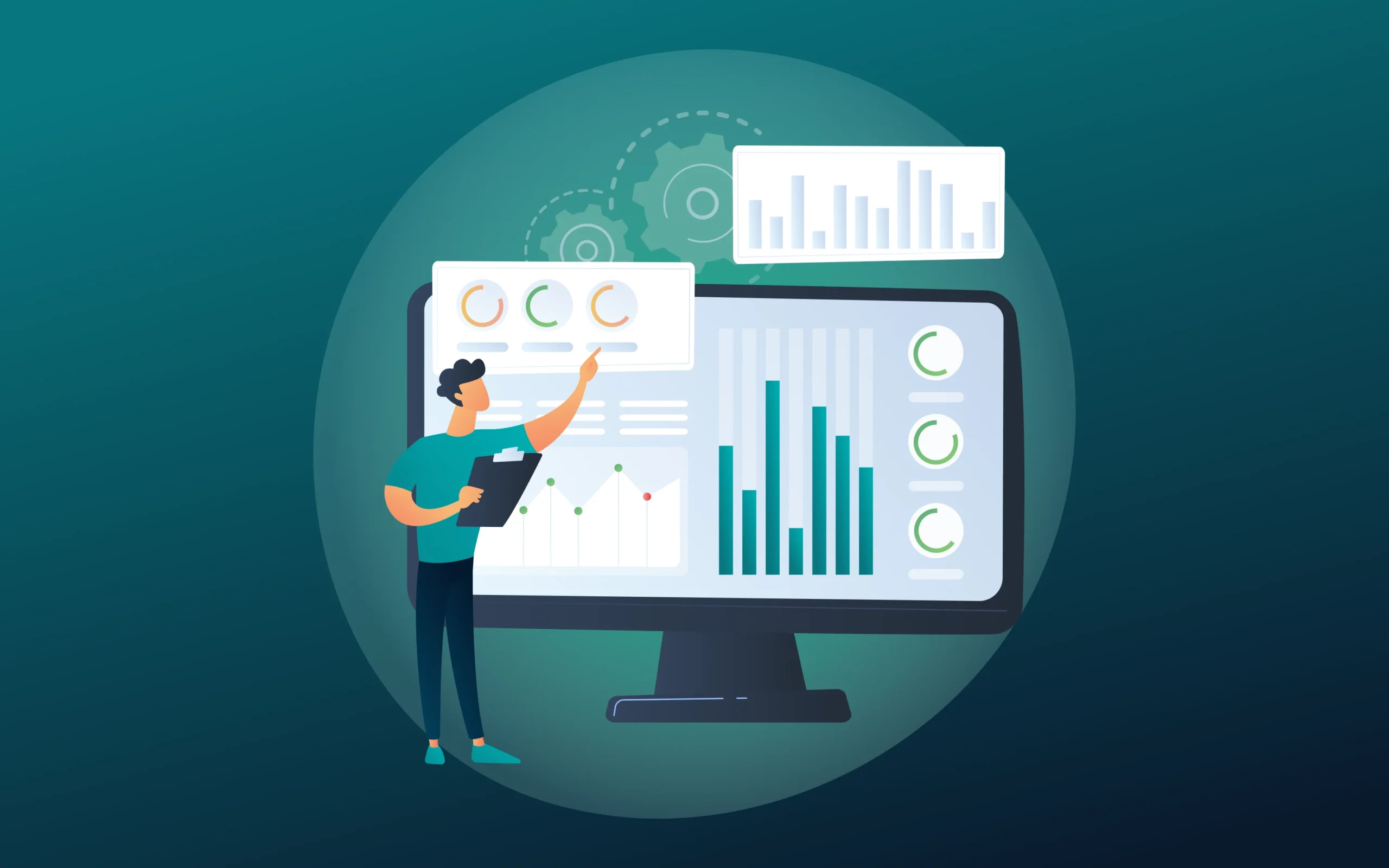
Let’s be real, demand generation isn’t just about getting noticed, it’s about keeping people interested. It’s kind of like dating, you’re not after a one-time thing, you want a long-term relationship. By tracking the right metrics, you can turn that initial spark into something lasting.
In this blog post, we’ll break down the top 10 demand generation metrics you should track to improve overall sales and marketing performance. You’ll discover which numbers really matter, how to use them to fine-tune your marketing, and the best ways to turn interest into loyal customers. Get ready to take your strategy to the next level and turn insights into action!
Why Tracking Demand Generation Metrics is Crucial in 2025

In B2B marketing, demand generation has come a long way. It’s no longer just about pushing out campaigns and hoping for the best. With more data available, marketers can now make smarter decisions to really engage the right people. But with this shift comes the challenge of figuring out which numbers actually matter.
Tracking demand gen metrics can sometimes feel like you’re drowning in data, but that’s where precision comes in. The right metrics give you clear insights into what’s working and what’s not. Without them, you’re just guessing—and that can cost time and money.
To stay competitive in 2025, knowing exactly what to measure is key. That’s how you’ll make better decisions, improve your ROI, and keep your marketing efforts moving in the right direction.
The Top 10 Demand Generation Metrics to Track
1. Marketing Qualified Leads (MQLs)
Marketing Qualified Leads (MQLs) are people who’ve shown interest in your product or service, but they’re not ready to buy just yet. They might have signed up for a webinar, downloaded a whitepaper, or spent time on key pages of your website.
Tracking MQLs is crucial because it tells you how effective your marketing efforts are at attracting potential customers. The more MQLs you generate, the better your chances of turning those leads into paying customers down the road.
Key indicators of an MQL include actions like:
- Visiting your product or pricing pages
- Subscribing to your newsletter
- Engaging with your content, like webinars or eBooks
By tracking these leads, you can see if your marketing is hitting the mark and adjust your strategies to improve performance.
2. Sales Qualified Leads (SQLs)
Sales Qualified Leads (SQLs) are a step closer to becoming customers compared to MQLs. While MQLs are interested, SQLs have shown they’re ready to talk business—maybe by requesting a demo or having a direct conversation with your sales team.
SQLs help you assess lead quality because they represent potential customers who are further down the funnel and more likely to convert. Measuring SQLs gives you insight into how well your marketing and sales teams are working together to turn interest into action.
To measure and improve SQL conversion rates:
- Keep an eye on how many MQLs turn into SQLs.
- Align marketing and sales efforts to ensure a smooth transition between the two stages.
- Regularly review your lead qualification process to make sure only the right leads get passed to sales.
3. Cost Per Lead (CPL)
Cost Per Lead (CPL) tells you how much it costs to generate a single lead. It’s an important metric for understanding the efficiency of your marketing efforts. If you’re spending too much to bring in leads, your campaigns may need some adjusting.
The trick is finding the right balance between cost and lead quality. Sometimes, cheaper leads don’t always mean better results if they don’t convert. So, you need to focus on getting high-quality leads at a reasonable price.
Here’s a simple example of how to calculate CPL: If you spend $5,000 on a paid campaign and generate 100 leads, your CPL is $50. Keeping this number in check helps you manage your marketing budget while driving results.
4. Cost Per Acquisition (CPA)
Cost Per Acquisition (CPA) goes beyond just generating leads—it tells you how much it costs to turn those leads into actual customers. CPA is a crucial metric in demand generation because it helps you see the full picture of your marketing and sales efforts.
Unlike CPL, which only measures the cost of bringing in a lead, CPA includes the cost of converting that lead into a paying customer. This means CPA takes into account everything from marketing to sales efforts, like nurturing leads and closing deals.
Keeping your CPA in check ensures that your demand gen strategy isn’t just attracting leads but also converting them efficiently and cost-effectively.
5. Customer Lifetime Value (CLV)
Customer Lifetime Value (CLV) tells you how much revenue you can expect from a single customer over the entire time they stay with your company. It’s a key demand generation metric because it helps you focus not just on getting new customers but also on keeping them around.
For CMOs, CLV offers a clear view of the long-term impact of demand gen efforts. If you’re consistently bringing in high-value customers who stick around and make repeat purchases, your strategy is working.
To boost CLV, focus on building strong relationships with customers through personalized campaigns, ongoing engagement, and great support. Keeping customers happy and loyal over time means more value for your business.
6. Return on Investment (ROI)
Return on Investment (ROI) is a simple way to see if your marketing efforts are paying off. In demand generation, ROI shows how much revenue you’re generating compared to what you’re spending. It’s an essential metric to track for every campaign and your overall strategy.
Measuring ROI helps you understand what’s working and what’s not, so you can adjust your budget and focus on the campaigns that deliver the best results.
Here’s a quick example: If you spend $5,000 on a campaign that brings in $20,000 in sales, your ROI is 300%. That’s a solid return and a clear sign your efforts are effective.
7. Activations & Signups
Tracking activations and signups helps you see how many of your leads are actually taking the next step, like signing up for a free trial or becoming active users. These metrics are key because they show more than just interest—they tell you who’s engaging with your product.
Measuring both conversions and engagement gives you a clearer picture of your demand gen success. It’s not enough to just get signups; you need to know if those signups are using your product and seeing value in it.
The more activations you track, the better you can understand how well your demand generation efforts are working at getting people to engage with what you’re offering.
8. Close Rate Per Channel
Close rate per channel shows you how well each marketing channel is converting leads into customers. It’s an important metric because it helps you see which channels are driving the best results and where you might need to make adjustments.
By tracking this, you can identify your most effective demand generation channels—whether it’s email, social media, or webinars—and focus your efforts (and budget) on what’s working best.
If you notice some channels aren’t performing as well, try adjusting your messaging or targeting to improve the close rate. Small tweaks can often make a big difference in turning more leads into customers.
9. Marketing Sourced Pipeline
Marketing-sourced pipeline refers to the total potential revenue generated by leads that come directly from your marketing efforts. It’s a key metric because it shows how much your marketing team is contributing to overall sales and revenue growth.
To track the impact of your marketing team, look at how many leads they bring in and how much potential revenue those leads represent. This helps you understand their direct influence on the pipeline.
For example, if your goal is to generate $100,000 in marketing-sourced pipeline for the quarter, you can monitor how close you’re getting by tracking the value of leads your marketing campaigns bring in and adjusting strategies as needed.
10. Average Deal Size
Tracking your average deal size is important because it shows the typical revenue you bring in from each customer. This metric can help you understand the value of your demand generation efforts and how they impact your bottom line.
Knowing your average deal size helps shape your marketing and sales strategies. For example, if you find that certain campaigns bring in larger deals, you can focus more resources on those efforts.
To target larger deals, consider optimizing your campaigns to attract high-value customers—whether it’s through more personalized outreach or focusing on higher-tier products or services.
How to Measure Your Demand Generation Strategy
Measuring your demand generation strategy can be done in two ways: manually or through automation. Manually tracking metrics often involves using spreadsheets and diving into the numbers yourself. While this works, it can be time-consuming and prone to errors.
On the other hand, using automated tools like CRM systems or marketing automation software can make tracking easier and more accurate. Tools like HubSpot, Salesforce, or Marketo can help you gather and analyze data quickly, giving you real-time insights into how your campaigns are performing.
To get the most out of your tracking, it’s important to regularly review your metrics and adjust your strategy when needed. Set time aside to check which campaigns are performing well and which could use some tweaking. This way, you can stay on top of your demand generation efforts and ensure they’re driving the results you want.
Key Considerations When Tracking Demand Generation Metrics
When tracking demand generation metrics, one key factor is segmenting your data. Break it down by channel, campaign, or customer segment to see exactly where your results are coming from. This helps you understand what’s driving success and where improvements can be made.
Collaboration is also crucial. Sharing data between marketing, sales, and finance teams ensures everyone is on the same page. When all teams have access to the right data, they can work together to make smarter decisions.
Finally, it’s not just about collecting data—it’s about using it. Take the insights you’ve gathered from your metrics and put them into action. Whether it’s adjusting your budget or refining your messaging, acting on what you’ve learned is the best way to improve your demand gen outcomes.
Conclusion
Tracking the right demand generation metrics is the key to making smarter decisions and getting better results. From MQLs and SQLs to CPA and CLV, these metrics help you understand what’s working and where you can improve. By regularly reviewing and optimizing your strategy, you’ll keep your demand gen efforts on track and your pipeline growing.
Need a hand with tracking all these numbers? Don’t worry, we’ve got you covered! At Bounty Hunter, we take the guesswork out of demand generation—so you can focus on what you do best. Let’s make your marketing strategy more than just good—let’s make it legendary. 🚀
P.S. If you’re still using spreadsheets to track all this… we need to talk!








